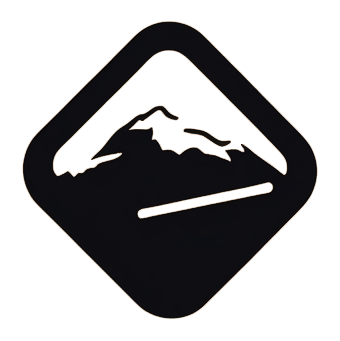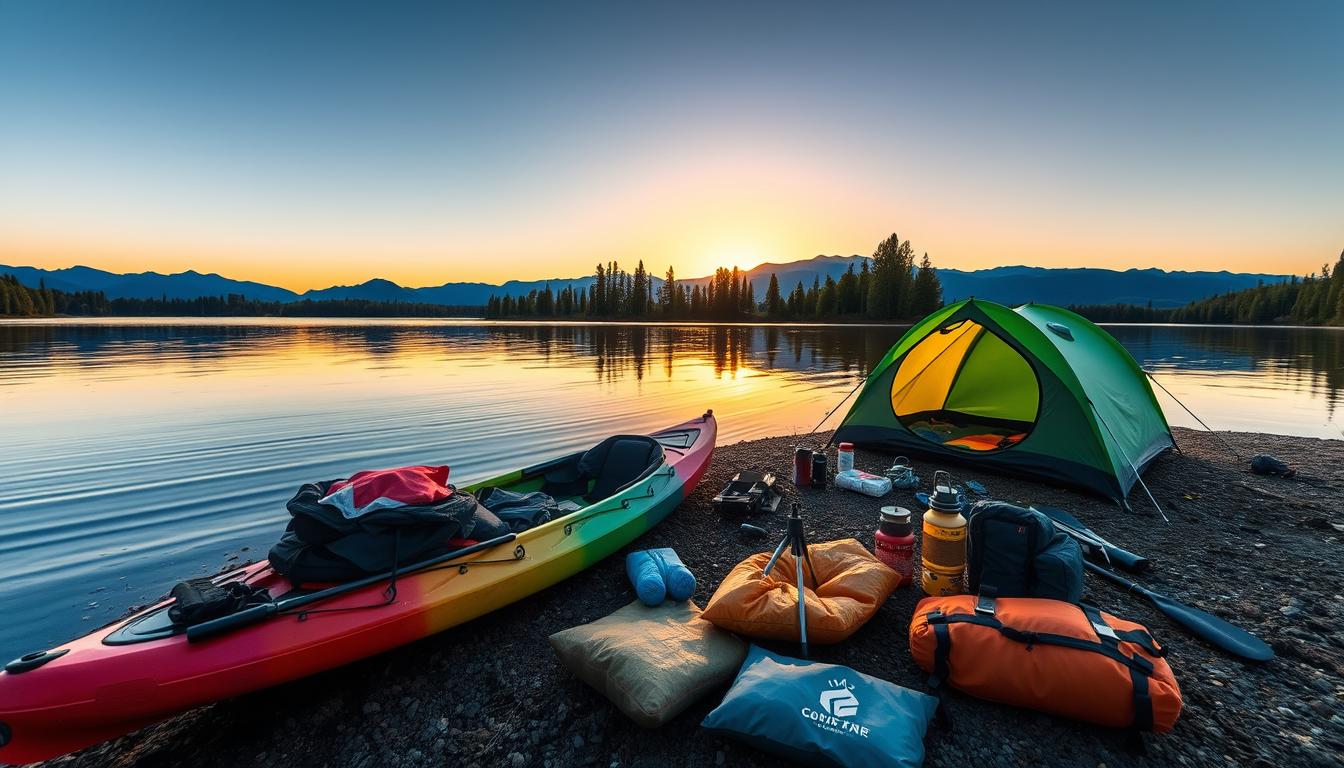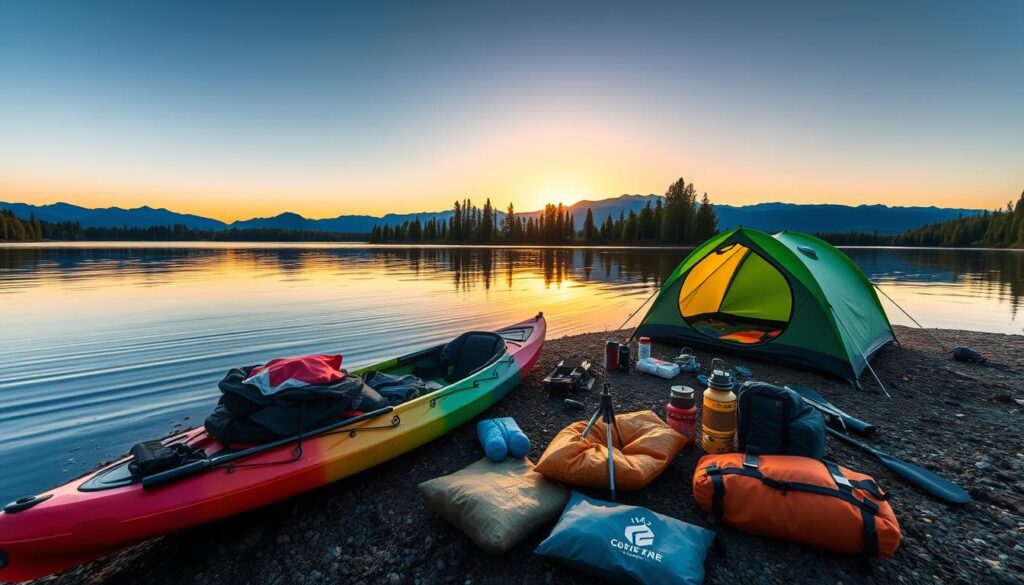
The sound of water against my kayak’s hull brought back my first overnight trip. It taught me that preparation is key. The right gear can turn a trip from bad to great.
Starting your first overnight kayak trip can be daunting. You need to know what to pack. This guide will help you choose the right gear for safety, comfort, and fun.
Every item, from safety gear to camping stuff, is important. With the right prep, you can enjoy the views, calm waters, and the thrill of nature from your kayak.
Key Takeaways
- Proper preparation is crucial for a successful overnight kayak trip
- Safety equipment should always be your top priority
- Beginners need comprehensive packing lists for confidence
- Versatile gear helps manage unpredictable outdoor conditions
- Learning and planning minimize potential risks
Essential Safety Equipment for Your Kayaking Adventure
Getting ready for an overnight kayak trip means planning carefully and knowing the right safety tips. Waterproof gear is key to keep you safe in changing water conditions.

Every kayaker needs a full safety kit, more than just basic stuff. Being ready for surprises and having the right gear is crucial for your safety.
Personal Flotation Devices and Safety Whistles
A top-notch personal flotation device (PFD) is your most important safety item. Choose Coast Guard-approved ones that fit well, are bright, and adjustable.
- Proper fit and comfort
- Bright, visible colors
- Multiple adjustment points
Don’t forget a safety whistle. It’s a small but mighty tool for calling for help from far away.
Navigation Tools and Emergency Communication
Good navigation is key for staying safe while kayaking. Bring waterproof must-haves like:
- Waterproof GPS device
- Detailed marine navigation charts
- Compass with luminescent markings
“In kayaking, knowing where you are can mean the difference between a great trip and a bad one.” – Professional Kayak Instructor
First Aid and Emergency Supplies
Your emergency kit should have waterproof containers with:
- Compact first aid supplies
- Emergency signaling devices
- Water purification tablets
- Emergency blanket
The best safety advice is to be prepared, stay alert, and have the right gear for any situation on your kayaking trip.
Planning Your Overnight Kayak Trip Route
Creating the perfect route is key for unforgettable coastal trips. Your overnight kayak journey needs careful planning. This ensures safety and enjoyment of the scenic coastline.
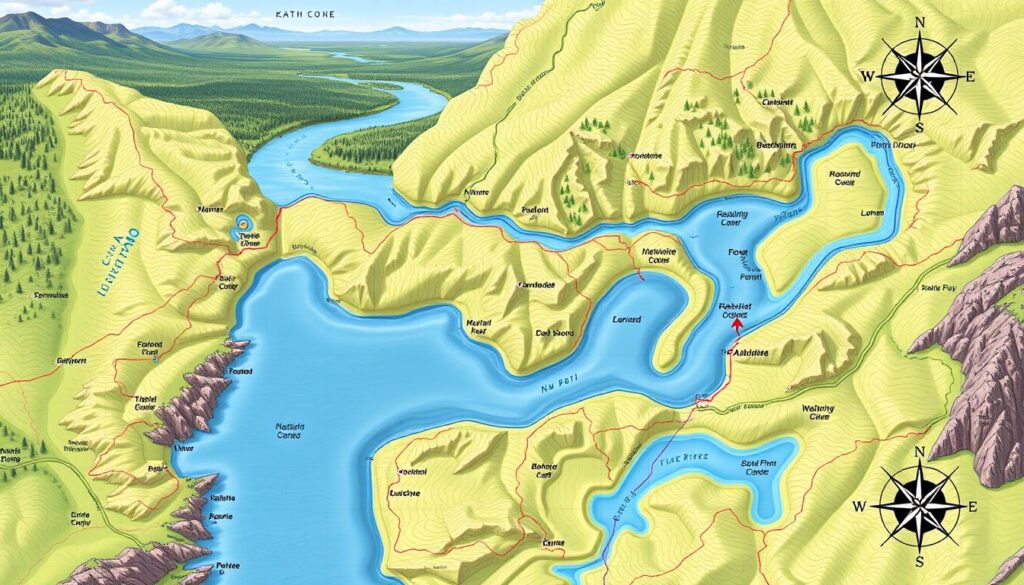
Begin by looking into waterways that fit your skill level. Think about these important points when planning your trip:
- Distance and paddling difficulty
- Potential camping locations
- Water conditions and tidal patterns
- Local regulations and permit requirements
Coastal adventures need thorough preparation. Make a detailed trip plan that includes:
- Exact route with multiple check-in points
- Estimated travel times
- Emergency exit strategies
- Backup communication methods
“A well-planned route is the difference between an adventure and a misadventure.” – Experienced Kayak Guide
Digital mapping tools can help you plan scenic routes accurately. Pro tip: Always share your planned route with a trusted contact. They can track your progress and alert authorities if needed.
Weather is crucial in coastal kayaking. Check marine forecasts often and be ready to change your route if conditions change. Being flexible can ensure a safe journey.
Must-Have Camping Gear for Waterside Accommodation
When you go sea kayaking, your camping gear is key. The right stuff makes your trip comfy, safe, and fun.
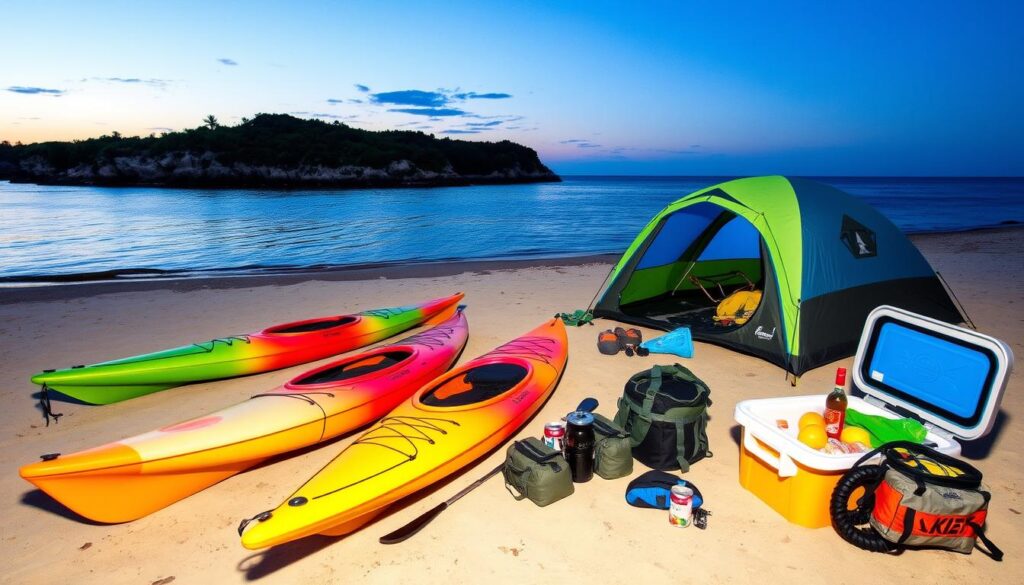
Choosing the right gear for sea kayaking is important. It needs to be small, light, and work well. This helps you handle the challenges of camping by the sea.
Waterproof Tents and Sleeping Systems
Your tent is your first line of defense against the weather. Look for tents made for sea kayaking. They should be:
- Waterproof
- Strong against wind
- Easy to pack
- Quick to set up
For sleeping, pick bags and pads that keep you warm and are easy to store in a kayak.
Camp Kitchen Essentials
Cooking on a sea kayaking trip needs special gear. Focus on:
- Small, strong stoves
- Just the basics for cooking
- Lightweight dishes
- Good fuel options
“The right camp kitchen gear turns a tough outdoor meal into a joy.” – Wilderness Cooking Expert
Lighting and Power Solutions
Good lighting and power are vital for comfort and safety at night. Get:
- Waterproof headlamps
- Small solar chargers
- Portable power banks
- Light lanterns
Every piece of gear should do more than one thing. It should also be light and easy to carry.
Paddling Equipment and Technical Gear
Choosing the right kayaking gear is key for a great overnight trip. Whether renting a kayak or using your own, knowing the must-haves is essential.
For overnight trips, pick a kayak that’s stable and has lots of storage. Touring kayaks are top choices for long trips. They have plenty of room for your stuff and track well in different waters.
Essential Paddling Equipment
- High-quality paddle with the right length
- Spare paddle for emergencies
- Spray skirt to keep water out
- Bilge pump to remove water
Learning good paddling techniques is important for a fun and efficient trip. Using the right paddling form saves energy and helps you move better. Taking a basic kayaking course can boost your skills before a long journey.
“The right equipment turns a good kayaking trip into an amazing adventure.” – Experienced Kayaker
Technical Gear Recommendations
- Deck compass for navigation
- Paddle float for self-rescue
- Tow line for emergency help
- Safety whistle
If you’re new to kayaking, renting a kayak is a smart move. It lets you try different gear without spending a lot. Many rental places have top-notch gear and can give great advice on choosing the right kayak and paddling techniques.
Your gear is your lifeline on the water. Spend time picking and learning about your equipment. This will help you have a safe and unforgettable kayaking adventure.
Weather-Appropriate Clothing and Personal Items
Choosing the right clothes for an overnight kayak trip is key. It can turn a good trip into a great one. Make sure you have waterproof gear to stay dry and warm.
Good kayaking starts with the right clothes. They should fit the weather and keep you comfy all day.
Layering Systems for Optimal Performance
Layering is important for keeping warm while kayaking. Your outfit should have:
- Base layer: Moisture-wicking synthetic materials
- Insulating layer: Fleece or lightweight wool
- Outer shell: Waterproof and windproof jacket
Quick-Dry and Moisture-Wicking Clothing
Choose clothes that dry fast to avoid chafing. Neoprene shorts and quick-dry shirts are great for long trips.
| Clothing Type | Material | Key Benefits |
|---|---|---|
| Paddling Shirt | Polyester Blend | Fast-drying, UV protection |
| Paddling Pants | Neoprene | Water-resistant, flexible |
| Outer Jacket | Gore-Tex | Waterproof, breathable |
Personal Comfort Essentials
Remember to pack important items for comfort:
- Waterproof sunscreen
- Polarized sunglasses
- Wide-brimmed hat
- Microfiber towel
“The right clothing can transform a challenging kayak trip into an unforgettable adventure.” – Professional Kayak Guide
Invest in quality waterproof gear. It will keep you comfortable and safe on your kayak trip.
Food and Water Planning for Extended Paddling
Planning your nutrition is key for a successful overnight kayak trip. Sea kayaking needs lots of energy and careful food prep. Your meal plan can make or break your adventure, keeping you fueled and hydrated.
- Pack lightweight, high-energy foods that are easy to prepare
- Calculate water needs based on trip duration and physical exertion
- Prioritize non-perishable meal options
- Include water purification methods
For sea kayaking, choose compact, calorie-rich foods. Dehydrated meals, energy bars, nuts, and dried fruits are great. They give you energy without weighing you down.
“The right food can transform your paddling experience from challenging to extraordinary.” – Experienced Sea Kayaker
Water management is key during long paddles. Carry different water storage solutions:
- Hydration bladders
- Portable water filters
- Purification tablets
- Collapsible water containers
Pro tip: Pack an extra day’s food and water as a backup. This prepares you for any unexpected situations on your sea kayaking adventure.
Storage Solutions and Packing Strategies
To make the most of your kayak’s space, plan carefully and use waterproof gear. A successful overnight kayaking trip needs smart packing. This keeps your stuff dry, easy to find, and evenly spread out.
Waterproof Containers and Dry Bags
Keeping your gear dry is key when you’re out paddling. Pick top-notch dry bags in various sizes and with different closures:
- Roll-top dry bags for clothes and sleeping stuff
- Hard-shell waterproof cases for electronics
- Clear bags for spotting items easily
Weight Distribution Tips
How you spread out the weight affects your kayak’s balance and how well it moves. Place items wisely:
| Location | Recommended Items | Weight Placement |
|---|---|---|
| Bow | Light items | 25-30% of total weight |
| Center | Heaviest stuff | 40-50% of total weight |
| Stern | Medium-weight items | 20-25% of total weight |
Accessibility Organization
Put things you’ll use a lot where you can easily get to them. Waterproof essentials like maps, snacks, and safety gear should be close by while paddling.
“Smart packing turns a good kayaking trip into an amazing adventure.” – Experienced Kayaker
Conclusion
This guide has covered the basics for a great overnight kayaking trip. Getting ready is key to a memorable adventure. It starts with the right safety gear and packing smart.
Safety is crucial when kayaking in remote areas. Every piece of gear adds to your safety and fun. Knowing how to dress, choose the right gear, and stay in touch in emergencies makes a big difference.
There’s no one-size-fits-all packing list. Your trip’s details, the weather, your skills, and what you need will guide your choices. Being flexible is important in kayak trips. Practice with your gear, learn its limits, and gain confidence slowly.
An overnight kayak trip is more than just paddling. It’s a chance to grow, connect with nature, and challenge yourself. With the right prep, you’re set to explore with confidence and joy.
